In the household plots you can find a large number of different plants. These are diverse flowers, both evergreen shrubs and trees, and unusual lianas with various creeping plants. However, there are cultures that will certainly allow you to highlight your garden or reservoir, make it just irresistible.
Such a plant can be attributed to Miscantus, a representative of cereals, which during active growth and flowering has a very beautiful form resembling a fountain. Miscantus is a southern representative who knows how to adapt to climatic conditions perfectly. For this, as well as for its decorative properties, this culture is valued among gardeners and landscape designers. Miscantus, landing and care for which will not be difficult even for inexperienced gardeners, will become the central decoration of any lawn or reservoir.
In this article, we will consider the features of the Missantus, and highlight the main types and varieties of this culture. And also tell me about the main nuances of the agricultural machinery of the cultivation of Miscantus in the open soil.
Features and description of Miscantus
Miscantus is a perennial herbaceous plant, which belongs to the family of frozen or cereal. This culture has a different name - often it is called a fan, which is most likely with the form of the plant itself. During flowering, an adult plant is a large shop of stems, which flows like a fountain. The natural habitat of this culture is the territory of the tropics and subtropics of Asia, Africa and Australia. Two types of Miscounts can be found in the nature of Russia, which are also widely used in landscape design. This plant is famous for its appearance, the decorativeness of which is achieved with the help of beautiful cribs of leaves and high flowerons with fragrant colors. In nature, they can be found on the shores of the reservoirs, in the floodplain of rivers and in the valleys.
From the Greek language, the name of this plant can be translated using two words: "Mischos", which means the leg and "Anthos" - flower. Literally, this unusual plant can be called a "flower on the leg", which was assigned for very long flowerons with inflorescences on the tops.
Description of Miscantus:
- Miscantus is a decorative cerebral who came from the tropics and acquired wide popularity in many countries of the world.
- This grain grass is widely used in landscape design and is used to decorate lawns, artificial reservoirs and ponds.
- Miscantus is a perennial flower that has a rather long creeping rhizome. Due to this, the plant may even in the most arid periods root to get moisture at a depth of up to 6 m. Czczuchy rhizome creates wide turns.
- The height of the Miscuantus can reach from 80 cm to 2 m, and sometimes up to 3 m, depending on the specific type and variety.
- The form of the plant is formed with the help of reprehensive shoots, quite strong and durable.
- This cereal was specially decorative thanks to the mobby leaves, which are located at the bottom of the stems.
- Leaves in a width of 1-2 cm, have a long lanceolate linear form.
- The surface of the leaves is rather tough, leathery, covered with scales. The color of the leaves is green, in the center along the liner is located.
- Leaves hang from shoots like a fountain that gives the plant a very beautiful and decorative appearance.
- From the middle of the bush, the stems grow long, up to 30 cm, the blooms, on the tops of which are inflorescences.
- The inflorescences are presented in the form of blizzard consisting of small spikelets, in the length of 0.3-0.7 cm. At the beginning of the flowering, the belties have a pinkish shade, but over time become silver, which gives the plant even greater decorativeness.
- Blossom starts from mid-July or early August. However, at pretty cool temperatures and short summer, flowering may occur later or not to step at all.
- This culture is characterized by a fairly rapid growth and mass increase.
- Winter hardiness of the Miscantus is different depending on the specific variety. There are quite capricious species that require necessarily shelter from cold weather, and there are also species that perfectly carry our winter.
- Miscantus is used not only in landscape design, but also as biological fuel. As a combustion product, it gives a large amount of energy without leaving a lot of waste.
Variety of species and varieties of Missantus
From subtropical and tropical territories around the world, approximately 40 different types of miscounts have spread, which possess their own features in landing and leaving. Among the most popular can be allocated to Miscantus Giant, Miscantus Chinese, Miscantus Sahoretus and others. Consider every kind and most common varieties of this unique plant in Russia.
Miscantus Chinese ( miscantus Sinensis)
- The natural habitat of this type of Miscantus is the territory of China, Korea, Russia.
- It has a good winter hardiness, so many of his varieties have become the greatest distribution in countries with a harsh climate.
- It is a rather powerful cereal with a short creeping rhizome.
- The plant itself is formed by reprehensive stems, which in the bush are quite loose.
- In height, this type of cereal can reach the maximum as possible.
- The lower part of the stems coated scaly leaves, and which have a narrow linear shape. In the center lamina is disposed a thick rib, which divides the sheet as it into two parts.
- The surface is slightly rough and tough leaves. In autumn the foliage takes on a yellow tinge, and some varieties of red.
- Blossoms miscanthus Chinese flowered spikelets, which are assembled in loose panicles. Their color pinkish or reddish, which then turns into silver.
- It blooms from August to October.
- Today, there are about 100 varieties of cereal species, have different levels of hardiness.
Miscanthus popular varieties of Chinese:
- «Blondo» grade. This plant can reach a height of 2 meters. It has a very good level of cold resistance. Can withstand temperatures down to minus 34 degrees Celsius, however it relates to zone 4.
- «Silberfeder» grade. 4 also relates to frost zone. Distinguish quite wide, and 2 cm, leaves dark green color and high peduncles, on which the panicle Similar to feathers.
- «Flamingo» grade. This plant can be attributed to morozosoykosti zone 5, because it withstands cold as minus 29 degrees. Also it grows well in our climate. It blooms with beautiful pink panicles.
- «Zebrinus» grade. This is a very old and popular variety of Chinese miscanthus. Different variegated foliage. The bush may reach 2.5 m in height, and therefore requires support.
- «Variegatus» grade. Also different variegated leaves, which are represented by long lamina greenish-white in color. At the height can reach 1.5-2 m. Per spike revealed flowers with red tops.
giant miscanthus
- Giant Miscanthus is a hybrid view, the origin of which is not all scientists fully understood.
- At the height of this plant can be up to 3 meters.
- Stems, forming a lush and dense shrub, erect, often require support.
- By the bottom of the stem attached weeping leaves that hang on the sides of the plant, making it look like a beautiful fountain.
- Leaves of dark green color, wide reach 2-2.5 cm. Has rigid vein and white band in the center lamina.
- Flowering begins in late summer or early autumn. At the tops of stems bloom pink panicles that later become silvery.
- It has excellent winter hardiness, miscanthus giant relates to zone 4, and can withstand temperatures down to minus 34 degrees.
miscanthus saharotsvetny
- The natural habitat of this type of cereal is the territory of Russia, China, Korea and Japan.
- In height, the plant can reach 2 m.
- Stems are straight, bare without any coating.
- In the lower part of the shoots, linear leaves are attached, which can be as long as 60 cm.
- Blossom begins in July and continues until October, before the onset of frosts.
- On the tops of the flowers are blooming quite long, up to 25 cm, rosewood rose or white-silver shade.
These kinds of Miscântus are perfectly aimed in the conditions of our harsh climate, other species and varieties are more likely to heat-loving plants and in our country may not bloom.
Missuance reproduction: the most common ways
Grow the Miscanthus on its site alone from scratch a rather complicated process that will require you attentiveness and zeal. However, with a big desire it is possible to do. For dilution of cereal culture, a predominantly vegetative method is used, and rather dividing the bush of the plant. It is also possible to grow from seeds, but this method is extremely rare.
Seed reproduction of Missantus
- In the conditions of our climate, cold winters and enough short summer, Miscantus seeds simply do not have time to ripen, so it is difficult to apply this method of reproduction.
- In addition, the seeds of this culture are very small, which, in turn, makes them harder. That is why even on sale to find Miscantus seeds is quite difficult.
- Although in the coming years breeders promise to withdraw enough varieties that will allow collecting seeds and sell them in specialized stores. This becomes possible thanks to the wide popularity of Miscantus, especially as biological fuel. It is for this purpose that a perennial is increasingly growing in rural farms, process it and use both fuel.
- If you still decide to experience your luck and grow muscanths from seeds, it should be remembered that many varietal signs will be lost, and you will get a beautiful and decorative bush only after 3-4 years.
- Pre-processing the seeds of the Miscantus do not require.
- The seeds are necessary in the fall of heating in peat pots, which are pre-moisturized.
- In the spring, after heating the soil, peat pots together with seedlings are planted into the open ground on the selected area.
Miscount reproduction of the bush
- This method is most preferable for this culture.
- However, it should be remembered that to replant, and consequently, and share the rhizome of the parent plant, follows no more than once every 3 years. Miscantus should have time to graze the right mass.
- The optimal time to divide the bush plants is the early spring of whether the beginning of the summer, depending on the concrete variety of Miscantus.
- The most appropriate period is the time when young shoots appear from the root.
- In this case, it is necessary to very gently dig up an adult plant, trying not to damage the root system and the stalks of the bush.
- You need to share immediately after digging or placing the plant into the cool storage room. However, even in such conditions, the plant will be viable only within a few days.
- After digging the parent plant, carefully divide the rhizome to the desired number of parts. Make sure that each part has at least stalks. Otherwise, the plant does not fit.
- Next also quickly plant young plants in prepared landing pit.
- At first, you will have to follow the transplanted bushes of Missantus for signs of wilting. The delay in the development of a young seedling is a normal phenomenon, should not be frightened.
Stages of preparation before landing Missantus
Growing Miscounts is possible only with careful and carefully preparation. Only in this case, you will get bright and unique plants on your site, which will create very spectacular landscape compositions. Initially, you need to purchase high-quality and healthy seedlings, as well as pick up on our site the most optimal place for landing. Consider the nuances of all stages.
Stage 1. Choice of Miscantus seedlings
- It is best to acquire Miscantus seedlings in specialized stores or agrofirms, which are professionally engaged in breeding plants. An independent cultivation of this plant seedlings will take a lot of time and will not give 100% result.
- Buy Miscantus is best in the form of an adult sapling, as a more young seedling will not have time to take care and blooming on the occurrence of cold weather.
- Also give preference to seedlings adapted to the conditions of your climatic zone. To do this, you can clarify all the peculiarities of the cultivation of the Miscantus at the store consultants. So you can avoid failure when planting and growing this culture. For the territory of Russia, the Miskantus Chinese and Giant Sorts are most suitable. Preference to varieties with frost resistance 4 or 5.
- When buying a young plant, it is necessarily carefully inspecting it. It should not be visible damage, signs of the presence of pests or diseases.
- The soil in the container should be clean and moderate-wet.
Stage 2. Selection of Places for Landing
- Choosing a right place for landing will be a key to getting a strong and beautiful decorative plant.
- Miscantus prefers to grow on a well-lit, open sun places, as this plant refers to the heat-loving. If you put it even in a light shadow, bloom you are unlikely to achieve.
- An important condition for the growth of MiscuTus is wet areas, since moisture for this plant is vital. Therefore, it is best to choose places along a water branch or pond, as well as in lowlands.
- It is also important to pick up the most protected from the wind and drafts.
- When buying Missant's seedlings, it is necessary to determine the planned composition and landing site. The tallest varieties are best planted as a background for other, smaller plants. Middle growth varieties will excellently look at the background of lawn or in combination with other plants on your site.
- Miscantus can be planted along the fence or as a natural fence, but it should be remembered that for one plant requires a lot of space. After all, this cereal culture is very growing, and it is worth considering.
Stage 3. Choice and soil preparation
- Miscantus is not demanding of the composition and fertility of the soil.
- If possible, do not land the seedlings of this plant on clay or sandy soils.
- Before boarding, it is important to carefully switch the selected area, about 2 bayonet shovels. This is necessary to facilitate soil and saturation with its oxygen. This process is best carried out in the fall during basic work. And in the spring you can only slightly explode the selected place.
- The soil on the site should be neutral or weakly acid. If the acidity at the selected place is increased, then during processing you can add some dolomite flour into the soil.
Miscantus landing technology in open ground
- The best time for landing Miscantus to the open soil Spring, or rather March or April - the period when the Earth has time to warm up.
- If you have been treated with the soil in the fall, then you only need to slightly explode and raise the ground.
- Saplings in the container are plenty of water. This is necessary for more careful plant extraction.
- At the selected area, prepare landing holes that at the beginning it is necessary to limit slate or metal chickens. Approximately 15-20 cm deep into the ground, insert the limiters, and 10-12 cm must perform above the surface. This is necessary so that the root system does not grow up, and the shape of the bush itself was correct and beautiful.
- The size of the pit should be twice as much as the root seedling system together with the Earth.
- If you sit down several plants together, then be sure to follow the sufficient distance between the seedlings. On average, it should be at least 1 m.
- If the water is observed on your site, then at the bottom of the pit it is best to place a layer of drainage from broken bricks or clay.
- Prepare a fertile substrate, which should consist of a delicate land, peat and reworked manure.
- Gently remove seedlings from containers and place in the landing holes.
- After that, gradually fill the pills with the prepared soil and slightly construct hands.
- After landing, all seedlings must be abundantly pouring water.
Miscount Growing Agrotechnology: Secrets and Nuances of Care
The full and healthy growth of the Miscantus will depend on your attention and care. Normal caring for Miscantus It should include regular and abundant watering, loosening and mulching of the soil, as well as feeding plants.
Watering
Miscantus prefers abundant and regular watering, especially in the hottest days of summer. It is best to water the plants from the hose, so you can provide this culture with the desired amount of moisture. Especially abundantly watered with young Miscantus seedlings who require strength to root.
Loosening and mulching
After irrigated, the soil around each plant must be exploded. However, it is necessary to do it very carefully, because the root system of the Miscantus surface is superficial and you can damage it. It is also important for the first years to carefully remove all weeds, because they can slow down the growth of the plant. To reduce the amount of irrigation and loosenings, the rolling circle can be slightly sprinkled with a dry peat. The tall varieties of this cereal must necessarily be tiered, since the stems in some cases can reach 3 m.
Podchar
- This plant requires regular, but moderate feeding.
- First of all, it must be remembered that the application of fertilizers is better to start for the second year after landing.
- The first feeding is made in May during the active vegetation. To do this, it is best to use liquid nitrogen fertilizer, for example, urea.
- The second feeding can be made in the early summer. During this period, it is better to use a solution of humate.
- In the second half of summer, a potash-phosphoric fertilizer can be added to each plant.
- However, fertilizers should not overdo it, otherwise the plant may die.
Fighting diseases and pests
Miscunce is characterized by good resistance to pests and various diseases. At the very least, today no evidence of the defeat of these plants of the disease was revealed.
Preparation for winter
If you have acquired a thermal-loving plant, then be sure to take care of the careful shelter of the plant from the freezing or temperature drops. To do this, before the offensive of frosts, thoroughly inspire the soil around the plant and build the ball from the film. The halash should have small outdoor places for air intake. In the spring shelter is removed, and brown leaves and stalks are neatly trimmed.
Using Miscounts in Landscape Design
This plant is widely used in landscape design, it allows you to create the most incredible and beautiful garden compositions that brightly decorate the plot.
- Miscantus looks great on the shores of reservoirs and ponds, creating very unusual paintings.
- Tall varieties of this plant can be planted as background for other crops.
- Perfectly Miscounts looks and as a single landing against the background of lawn.
- Many gardeners plant Missant's seedlings as a natural fence.
- As an option, this cereal plant can be planted in conjunction with others, creating bright and unusual mixtures and rokaria.
Photo of Miscantus in landscape design
You can more clearly see all the features and options for using Miscants in landscape design on the photos suggested below.
To create bright and unique garden compositions on your site, be sure to use Miscantus - a plant that will definitely decorate your decorative appearance at any time of the year.

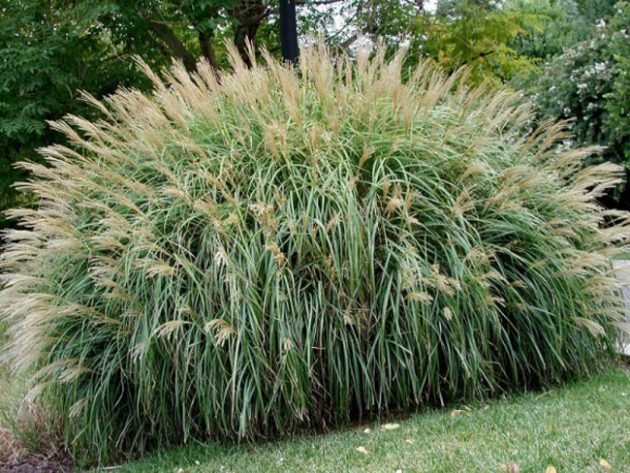
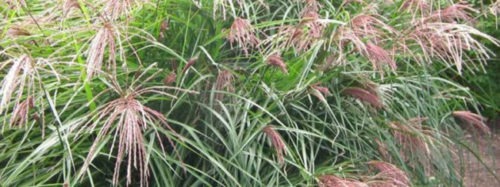
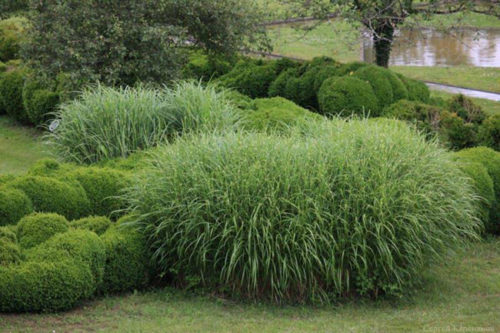
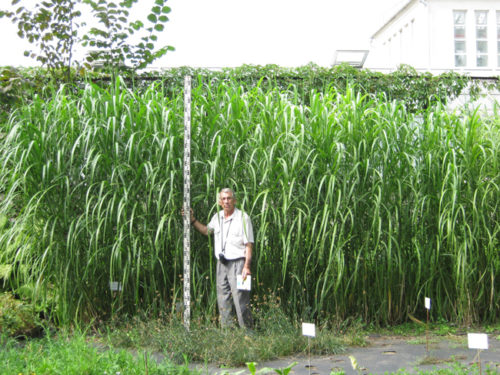
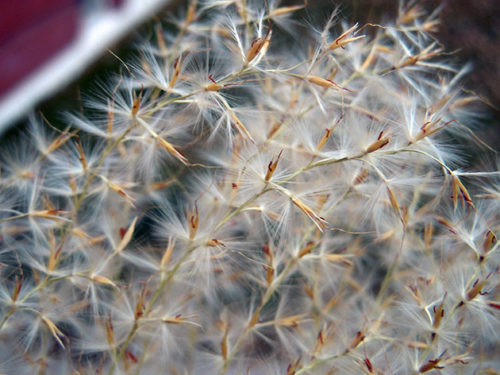
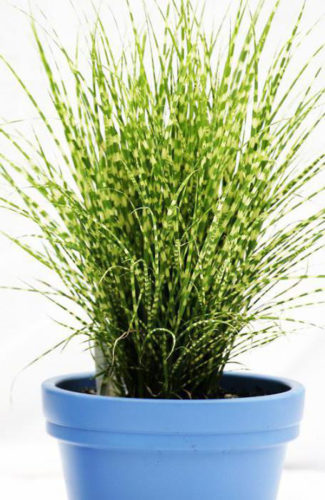
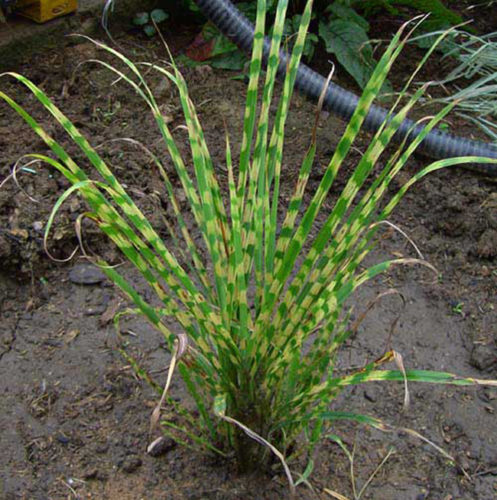
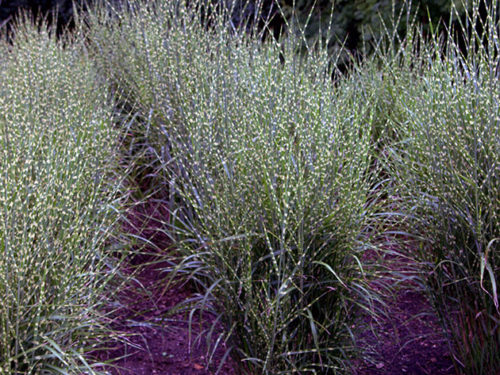
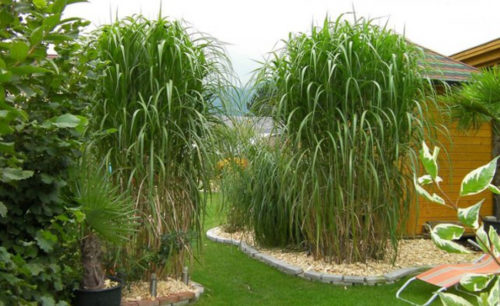
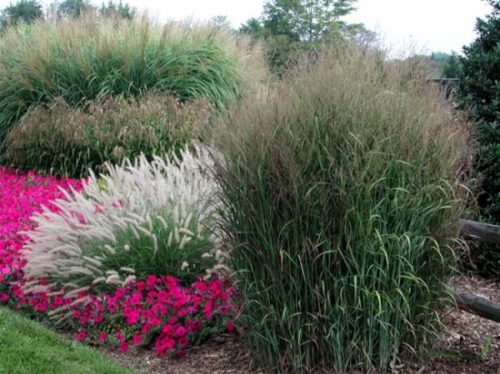
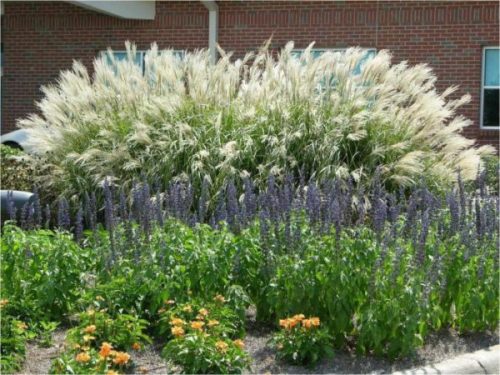
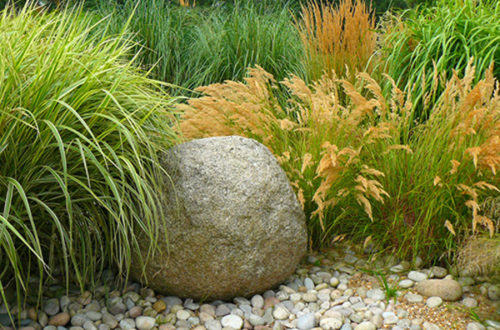
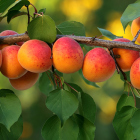
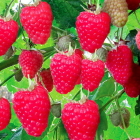
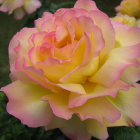
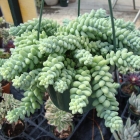
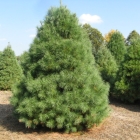
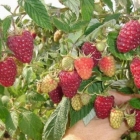
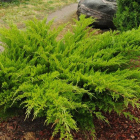
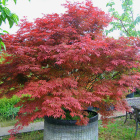
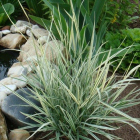
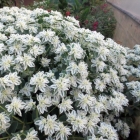
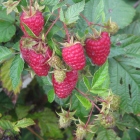
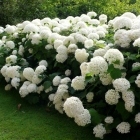
 Start a discussion ...
Start a discussion ...